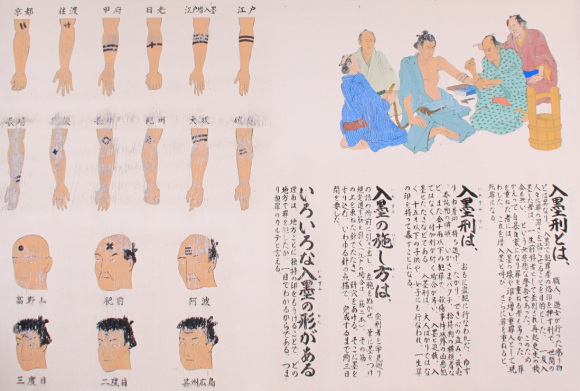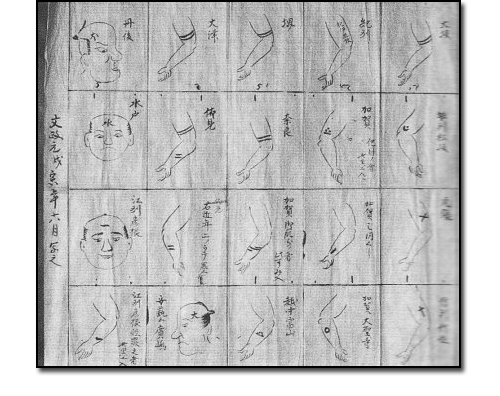The Tattoos that Marked the Criminals of the Edo Period
Traditional tattoos were strong signifiers; murderers had head tattoos, while theft might result in an arm tattoo.

The art of tattooing has a long and rich history in Japan. Today, tatoos often remain stigmatised, associated with criminality and nonconformity. There is a historical reason for this, however: during the Edo period (1603-1868), criminals were brandished with tattoos in order to identify and punish them. Despite the fact that this practice was banned during the Meiji period, the stigma remains.
Three Strikes
The tattoos of the Edo period were strong signifiers; murderers had head tattoos, while theft might result in an arm tattoo. This practice, irezumi kei, or tattoo penalty, replaced the more bloodthirsty decapitations and removal of limbs that preceded it. However, head tattoos also operated on a three strikes system, each crime punished with a single stroke of a Chinese symbol (大), after which was death. Each region had its own symbol representing both crime and location, rendering it possible to immediately identify the details of the act committed. In Hiroshima people were tattooed with dogs; Chikuzen, lines; Takayama, dots; and Hizen, crosses.
While today’s perceptions of tattooing in Japan might be rooted in this 5000-year history, contemporary organised crime groups such as the yakuza continue the practice of tattooing, perpetuating its association with criminality. This has even led to misconceptions that tattoos in Japan are illegal; however, the law forbidding tattoos was abolished in 1872.



TRENDING
-
A House from the Taisho Era Reveals Its Secrets
While visiting an abandoned building, Hamish Campbell discovered photographs the owner had taken of the place in the 1920s.

-
The Taboo-Breaking Erotica of Toshio Saeki
The master of the 1970s Japanese avant-garde reimagined his most iconic artworks for a limited box set with silkscreen artist Fumie Taniyama.

-
With Meisa Fujishiro, Tokyo's Nudes Stand Tall
In the series 'Sketches of Tokyo', the photographer revisits the genre by bringing it face to face with the capital's architecture.

-
Masahisa Fukase's Family Portraits
In his series ‘Family’, the photographer compiles surprising photos in which he questions death, the inescapable.

-
Hajime Sorayama's Futuristic Eroticism
The illustrator is the pioneer for a form of hyperrealism that combines sensuality and technology and depicts sexualised robots.





